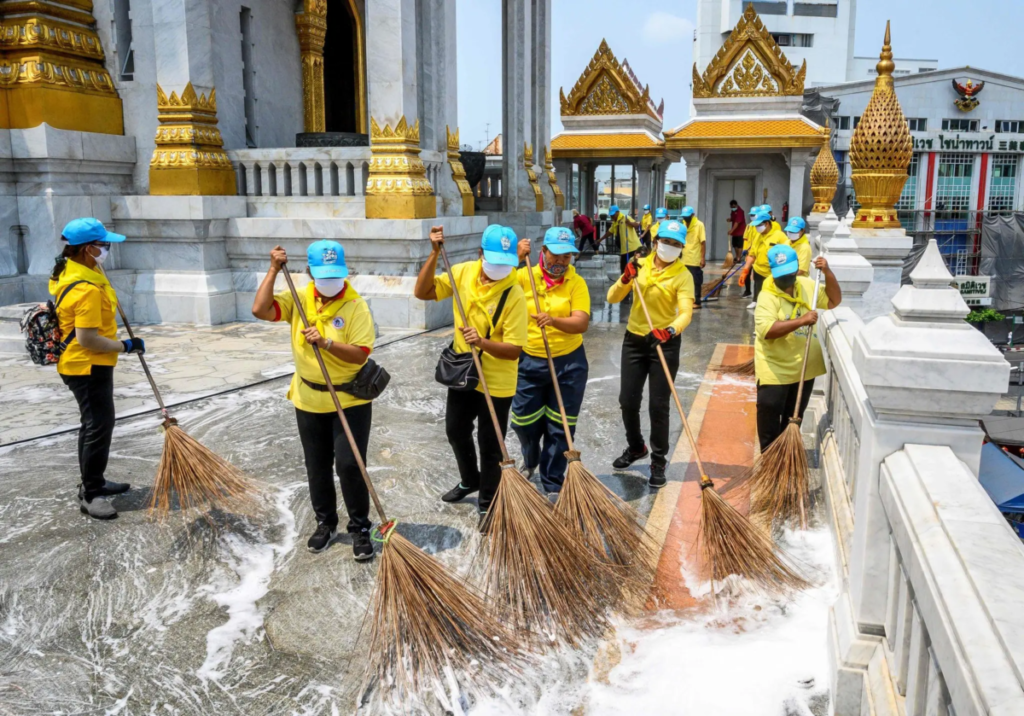
In stressful and unpredictable times, many people turn to religion for a sense of direction. Even as COVID-19 shut down places of worship, individuals remained united and steadfast in their faith. While some individuals unified by checking on their neighbors, others unified against regulations. According a study by UChicago Divinity School and The APNORC Center for Public Affairs Research, religious American adults were more likely to support protests against stay-at-home orders compared to those without a religious affiliation.
Furthermore, religious gatherings across the world continued to happen despite social distancing guidelines, since religious followers often quoted “God is our shield.” Though this did not happen in my own family, I knew people who would go to the temple or sites of worship—places that would then become hotspots for COVID-19 cases—because they believed that they were protected against the virus. I often felt conflicted because I did not want to minimize their religious beliefs, but I also knew that science dictated that crowds would increase COVID-19 transmission. Thus, with the comeback of the 1950s drive-thru church gatherings, it seemed that a compromise appeared with individuals taking precautions against the virus. However, how did this adjustment come about? The answer may lie with religious leaders.
With regards to AIDS, religion, a key institution, was utilized due to its extensive reach over its members. For example, 56% of South Africans identify as being religious, and it is also the country with the highest prevalence of AIDS. Here, when religious leaders were equipped with the language and knowledge surrounding AIDS, they were better able to aid their afflicted church members. A study found that preachers became not only mediators between family members and those living with HIV/AIDS, but also educators about the condition. They became promoters of safe sex, and reducers of the stigma surrounding HIV/AIDS, enabling a decrease in transmission rates of HIV.
Similarly, religious leaders have played role in the COVID-19 pandemic. In fact, to American adults who attend religious services at least monthly, the clergy rank as their most trusted source of information on COVID-19. While some religious sites have stayed quiet on the matter to avoid any potential conflict, many preachers, rabbis, imams, and priests have called on the importance of helping strangers:
“In getting yourself vaccinated, you are helping your neighbor.”
Rev. Gabriel Salguero
Religious places have even held pop-up COVID-19 clinics where individuals can learn more about the virus and get vaccinated. Others have made it a goal to spread accurate information about the virus to their members across the United States.
Overall, with vaccine hesitancy continuously rising, it is important that we mobilize the efforts of places of worships and their networks, to spread awareness and, hopefully, bring a decline in COVID-19 cases.

Nice work, Sriya! I find it curious to see the varying ways that churches responded to the COVID-19 pandemic, whether it be through denial, spreading the facts, or spreading misinformation. I wonder how much of our current understanding of COVID has to do with the religious hard-right and their involvement in the government. I also wonder why churches did not bind together to fight COVID in the way that Dr. Dube described that she managed to do in Africa with HIV/AIDS.
Great job Sriya. Along the lines of Emie’s comment, it is curious how some places of worship chose to suspend in person worship while others didn’t. I think this is about more than religion, but also about politics, money, and the need for human connection (and I imagine an in person connection to their higher being). It has been interesting to see how moving religious services to virtual/online formats has increased access to those services for those who don’t have transportation or whose health keeps them from attending.